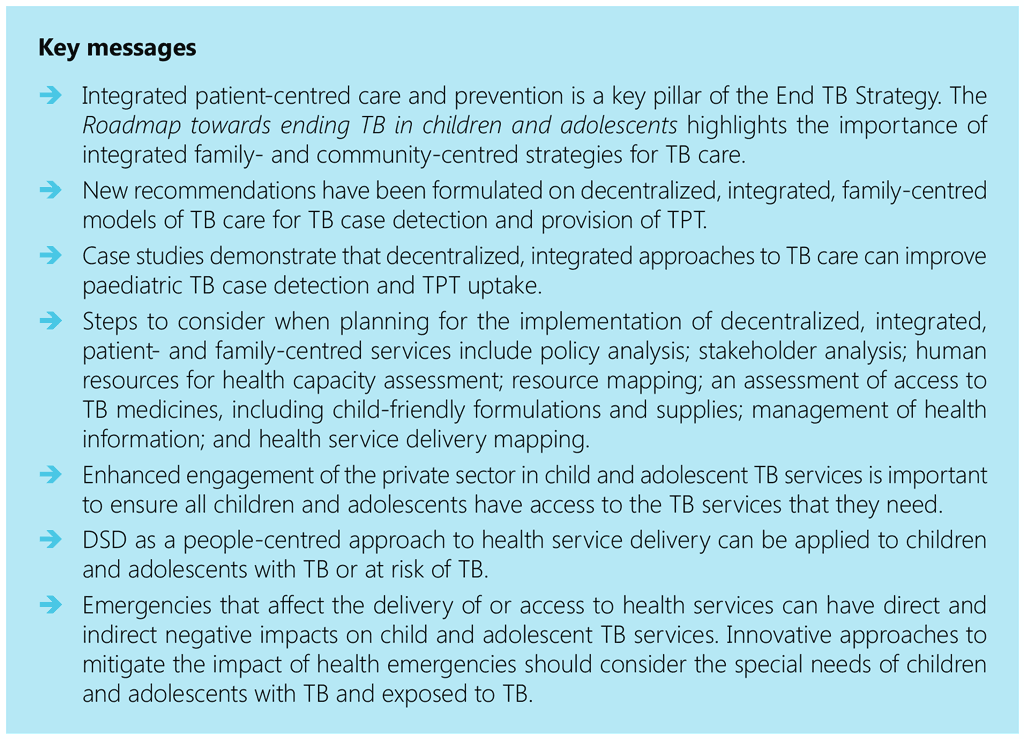Children and Adolescents
6.5 TB and health emergencies
Health emergencies, such as the COVID-19 pandemic, are associated with a disruption in health service delivery, either directly due to the focused attention given to the emergency or indirectly due to measures implemented to control the emergency.
6.4.3. Implementation considerations
Generally, integration of TB care and treatment into DSD models requires adaptations at multiple levels of the health system, including national, facility and community levels (177). This includes enhancement of leadership and coordination, adaptation of guidelines, capacity-building, adjustments in logistics management, alignment of existing recording and reporting tools, and community engagement. Other factors to consider include the local burden of HIV and TB disease, existing infrastructure and
human resources.
6.4.2. Rationale
Countries may have DSD policies in place, but children, adolescents and people living with HIVassociated TB are often excluded. DSD has primarily focused on people living with HIV who are established on ART (79). It is therefore important that the NTP works closely with the national HIV programme to ensure children and adolescents are able to access these patient-centred approaches.
6.4.1. Background
The concept of DSD (previously referred to as differentiated care) is increasingly being applied during the provision of comprehensive HIV services (78). In the context of HIV, DSD is a people-centred approach that simplifies and adapts HIV services to better serve the needs of people living with HIV and to optimize the available resources in health systems. DSD is premised on the fact that delivery of services is not a one-size-fits-all model but rather recognizes the diversity of people who seek the services.
6.3.4. Implementation considerations
A wide range of private health care providers exist in different settings, and the services they provide vary. It is important for NTPs to map the different private health care providers in their settings and implement flexible models of engagement guided by the scope of services they provide.
6.3.3. Benefits of involving the private sector in TB care
Engaging health care providers within the private sector aims to improve access to TB care and treatment for people who prefer to seek care within the private setting, including children and adolescents (174).
6.3.2. Rationale
In most low- and middle-income countries, private providers are an important source of health care for the whole population. Typically, less poor people make more use of formal, qualified providers, while poor people often turn first to informal, unqualified providers. Private providers often account for 50–70% of care, especially outpatient primary care (175).
6.3.1. Background
In many high TB burden countries, the majority of missing people with TB, including children, seek treatment from private providers or other care providers not linked to the public sector at least once (174). The private sector is also a common point of care for children presenting with common illnesses, such as cough, fever and diarrhoea, especially in countries with a large private sector (175).
Pagination
- Previous page
- Page 6
- Next page
 Feedback
Feedback
